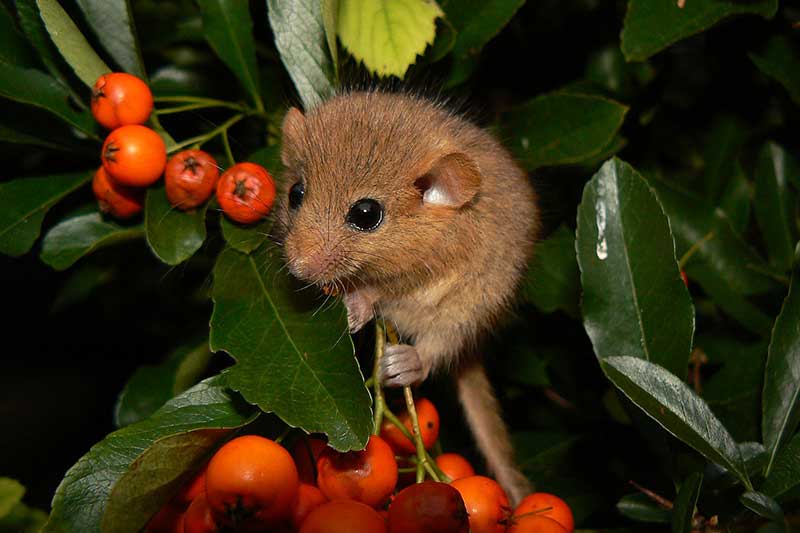Short story from the understory
My name is Stephen Carroll and I’m a dormouse-aholic. 16 years ago I encountered dormice at a woodland near Exeter, and I’ve been monitoring the nestbox scheme there ever since.
The timing coincided with my mature awakening as a wildlife enthusiast. Also, I live in Devon, a dormousey hotspot, so it was inevitable: Devon and dormice go together as naturally as the ordering of cream and jam in a cream tea. This most recognisable, least seen icon of local hedges and woods was out there, mysteriously, somewhere. At night they crept into the understorey of my dreams and nibbled away at the peanut feeder of my subconscious.
“Devon and dormice go together as naturally as the ordering of cream and jam in a cream tea”
Fossil evidence suggests our earliest mammalian ancestor was a dormouse-like creature Eomaia ‘ancient mother’, which rummaged around in shrubberies . It explains a few of my chosen hobbies. Devon has a longstanding heritage of dormouse research, from Elaine and HG Hurrell’s first observations that hazel nuts were opened in a distinctive way at Moorgate on Dartmoor (where the country’s oldest dormouse box may also still be in situ, 50+ years later), to relations with pied flycatchers, nest tubes, tracking tubes, genetics and forestry, to brand new revelations about hibernation. We hold regular county get togethers every 1-2 years to meet and share news.

Photo by Danielle Schwarz
My monitoring site has been running continuously since 1993; in that period we’ve witnessed something ourselves which matches further recent research – unfortunately: an apparent decline of over 70% in 20 years. These days dormice are seldom recorded and the checks can feel more like nature rambles with incidental survey attached. But an important aspect is gathering this long-term information. And we notice some other things too: broad-leaved helleborines, sawyer beetle Prionus cororarius, silver-washed fritillaries, a box-roosting bat, an increase in tree bumblebee Bombus hypnorum nests; those few times we see a dormouse or two, it’s still magical.
2020 marks the 30th anniversary of the National Dormouse Monitoring Programme. Along with our partners at Natural England, PTES collate records from over 400 dormouse monitoring sites across the UK. The NDMP now has hundreds of trained monitors regularly checking dormouse boxes throughout the year. We’re extremely grateful to all our dormouse monitors for their great contribution to dormouse conservation. If you’d like to donate to our work to help us continue conserving this vulnerable species, please donate here. Thank you.
